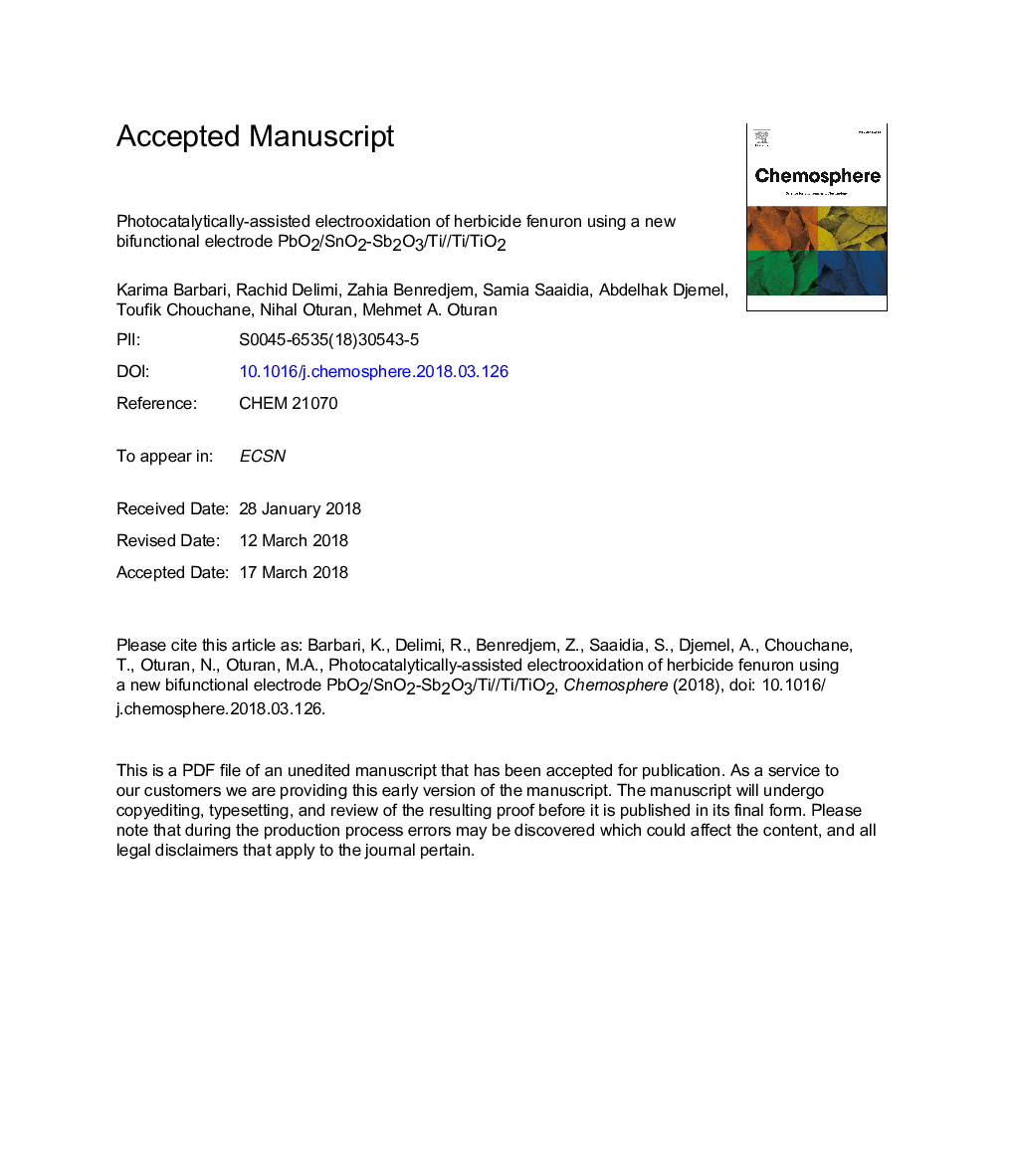| Article ID | Journal | Published Year | Pages | File Type |
|---|---|---|---|---|
| 8851349 | Chemosphere | 2018 | 34 Pages |
Abstract
The degradation of the herbicide fenuron was investigated using a new porous bifunctional electrode where the electrooxidation takes place on one side and the photocatalysis on the other side. The characterization of the synthetized bifunctional electrode (PbO2/SnO2-Sb2O3/Ti//Ti/TiO2) was performed by scanning electron microscopy, energy dispersive X-ray spectrometry and X-ray diffraction analysis and showed that the anodic side (Ti/SnO2-Sb2O3/PbO2) is covered with a tetragonal β-PbO2 film and that the photocatalytic side (Ti/TiO2) consists of an anatase phase of TiO2. The single application of electrooxidation achieved 87.8% fenuron degradation and 84.1% chemical oxygen demand (COD) removal while heterogeneous photocatalysis resulted in only 59.2% and 39.7% fenuron concentration decay and COD removal, respectively. On the other hand, the photocatalytically-assisted electrooxidation (photo-electrooxidation) performed on the bifunctional electrode provided higher performances of fenuron degradation (97.5%) and mineralization (97.4%). Investigation of operating parameters highlighted the positive effect of increase in current density. Conversely, an increase in fenuron concentration led to a decrease in degradation rate and COD removal. It was also found that the COD removal and mineralization efficiency are higher in a neutral medium.
Related Topics
Life Sciences
Environmental Science
Environmental Chemistry
Authors
Karima Barbari, Rachid Delimi, Zahia Benredjem, Samia Saaidia, Abdelhak Djemel, Toufik Chouchane, Nihal Oturan, Mehmet A. Oturan,
